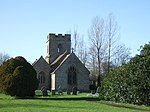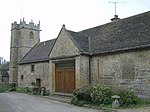Hermitage, Dorset
Dorset geography stubsHamlets in Dorset

Hermitage is a small village and civil parish in the county of Dorset in southern England. It is situated in the Blackmore Vale under the scarp of the Dorset Downs, 6 miles (9.7 km) south of the town of Sherborne. Dorset County Council's latest (2013) estimate of the parish population is 70.Augustinian monks once had a hermitage here (also known as the Blackmoor Priory Hermitage), whence the name of the village, but they abandoned the site in the 14th or 15th century. The Lady's Well which they used still remains, on the edge of woodland a short distance from the village.
Excerpt from the Wikipedia article Hermitage, Dorset (License: CC BY-SA 3.0, Authors, Images).Hermitage, Dorset
Hartley Street,
Geographical coordinates (GPS) Address Nearby Places Show on map
Geographical coordinates (GPS)
| Latitude | Longitude |
|---|---|
| N 50.859 ° | E -2.504 ° |
Address
Hartley Street
Hartley Street
DT2 7BB
England, United Kingdom
Open on Google Maps









